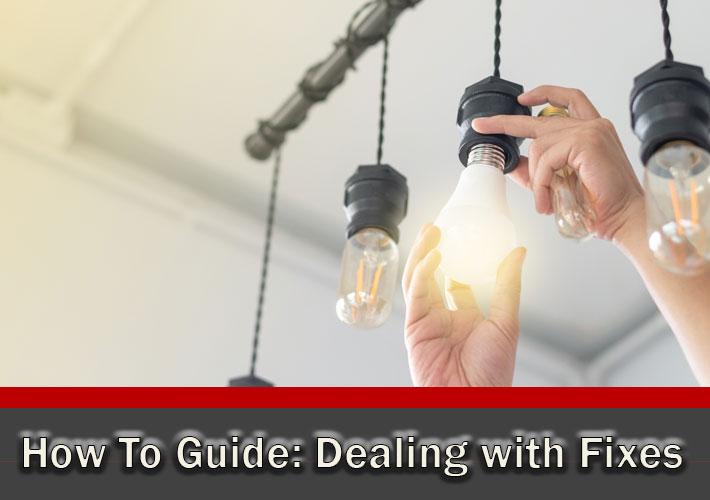How To Guide: Dealing with Fixes that Require Your Attention
We’ve all dealt with problems around the home that have gone on for a little longer than they should have. From a dripping shower to a blocked sink, we’re all guilty of falling a little short when it comes to DIY. However, when it comes to the lights, if you’re experiencing flickering, you really need to take action. Here’s our handy how to guide that explains how you can identify and deal with problems with your circuits. Of course, as you’d expect, the response is usually to call an expert, but there are some steps you can take…
How to Deal With: Dimming Lights
Although wind and rain can cause the lights to flicker, it is much more likely that there’s a loose connection or switch issue. Before doing anything else, check your electrical panel known as a consumer unit (this is usually on a storage cupboard inside of your house or in the garage).
If there’s an immediate and easily solvable problem, it’s likely that you’ll find the solution here. If you can’t, then try switching various large scale appliances on and off, to see if they have any impact. If they do, then it’s worth calling a repair man to deal with that specific appliance as this may solve your issue.
If a repair man cannot solve the issue, then it can also be worth calling your energy supply company, as any wiring changes you make may affect them.
How to Deal With: A Lack of Electrical Outlets
A lack of outlets, particularly in a kitchen, is a large problem, and it’s one that can’t simply be solved by back to back extension cords or piggybacking on surge protector strips.
If your circuit is overloading then you simply have to look for other solutions before you cause greater electrical issues or even a fire. That extension-cord trick can overload the circuit for the room and put your home at risk. You can add additional outlets to your kitchen and could even consider a dedicated circuit in your electrical panel to solve the problem. Consult an expert to see which is the best option for you; it should be doable for under £500.
How to Deal With: Blown Light Bulbs
Most of the issues that arise from blown light bulbs or burnt-out light bulbs stem from the fact that the bulb that is currently in the circuit has a wattage higher than the recommended value.
Due to a sheer reluctance to buy new bulbs, many people use bulbs with more watts, but this is incredibly dangerous, because the bulb’s extra heat can actually scorch or melt the socket, causing a fire. The solution, therefore, is simple: buy the right bulb for your wattage.
How to Deal With: Future Issues
As daft as it might sound, the most important thing you can do now is plan for future problems. When an issue with a circuit or a light bulb arises, most people struggle to identify it because they're unsure about the circuit breakers on their electrical panel known as a consumer unit.
So, phone a friend and ask them to help you ensure that yours are labelled correctly. The process is really simple, just turn on all appliances and lights in the house. Then have one person by the breakers and another walking around. As you turn each one off, ask your friend to tell you which lights have gone off and mark it accordingly.
Hopefully this has helped you learn how to deal with any problems that arise with your circuits. If you’re unsure, just ask the experts.

